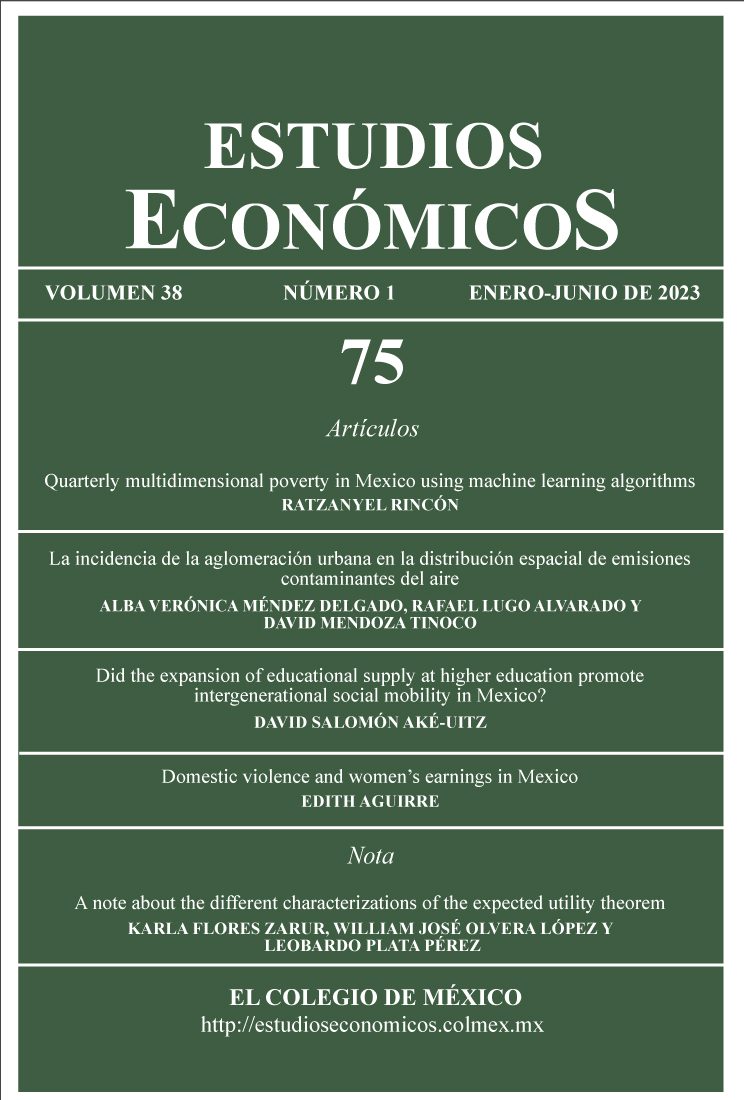Published 2022-12-16
Keywords
- multidimensional poverty,
- machine learning,
- LASSO logistic regression,
- random forest,
- support vector machines
How to Cite
Abstract
This article addresses the lack of timely information about multidimensional poverty in Mexico. Three machine learning algorithms —the LASSO logistic regression, random forest, and support vector machines— are trained with the ENIGH to find generalizable patterns of multidimensional poverty in the raw data. The fitted models are used to classify each individual in the ENOE as poor or non-poor to obtain aggregated poverty rates on a quarterly basis. These estimates are closer to the official levels of multidimensional poverty than the labor poverty measurement and provide an accurate poverty outlook more than a year ahead of the official measure.

